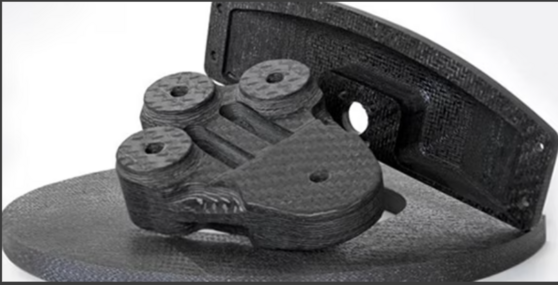Sheet Lamination: Difference between revisions
Jump to navigation
Jump to search
No edit summary |
No edit summary |
||
| Line 1: | Line 1: | ||
== Process description == | == Process description == | ||
[[File:Sheet lamination part.png|right|frameless|558x558px]] | |||
sheet lamination is one of the most flexible when it comes to materials, as long as it comes in the form of sheet stock it probably can be printed with sheet lamination. every layer of the print is cut out of a roll of sheet stock, they are stacked and bound using a process that is depended on the material (most commonly an adhesive). | sheet lamination is one of the most flexible when it comes to materials, as long as it comes in the form of sheet stock it probably can be printed with sheet lamination. every layer of the print is cut out of a roll of sheet stock, they are stacked and bound using a process that is depended on the material (most commonly an adhesive). | ||
| Line 29: | Line 30: | ||
|50 | |50 | ||
|} | |} | ||
Revision as of 09:01, 22 September 2023
Process description
sheet lamination is one of the most flexible when it comes to materials, as long as it comes in the form of sheet stock it probably can be printed with sheet lamination. every layer of the print is cut out of a roll of sheet stock, they are stacked and bound using a process that is depended on the material (most commonly an adhesive).
strength
- speed: because sheet lamination just has to cut out the perimeter of the each layer instead of filling in the whole area it can be much faster then other technologies.
- ubiquitous materials: many other technologies need more specialized feed materials, but sheet lamination just needs something that is comes with sheet stock and is compatible with the bonding process. this makes tracking material cheaper and easier
- micarta printing: micarta is a layered material made of adhesive and sheets of material (typically paper, linen, canvas, or carbon fiber). it is a strong light weight material and sheet lamination is a convenient way to rapidly make parts out of this material.
weaknesses
- limited geometries: sheet lamination struggles with the more complex geometries that other printers allow for.
- surface finish: the surface finish of the part is dependent on the material used. this is something that must be taken into account when choosing a material
| Low | High | |
|---|---|---|
| volume X/Y/Z (mm) | 305/305/102 | 457/449/101 |
| resolution (mm) | .042 | .02 |
| layer height (um) | 50 |
